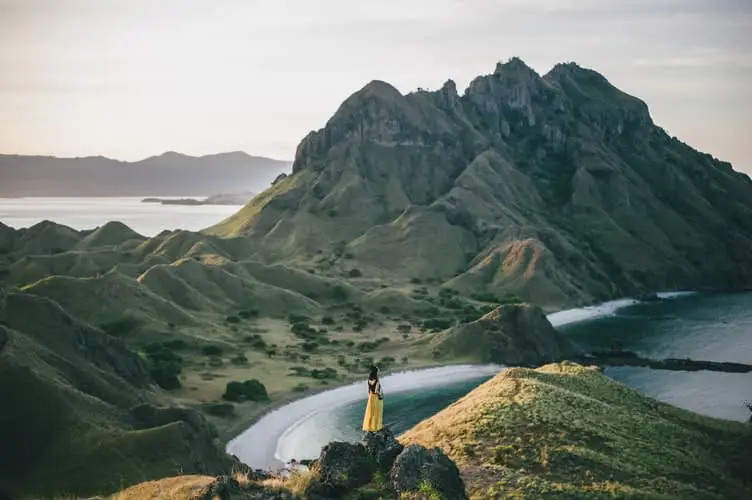Welcome to animals and wildlife in Indonesia! We have compiled a list of some of the fascinating animals in Indonesia, many of them being some of Asia’s most endangered species! So dive in and explore Indonesia with us!

Key Points
| Topic | Key Points |
|---|---|
| Geography | – Indonesia is the largest nation in Southeast Asia by size. |
| – It is the fourth most populous country globally. | |
| – The country is located on the Equator and has numerous volcanoes, beaches, and diverse landscapes. | |
| Tourism | – Indonesia attracts over 20 million visitors annually, known for its famous beaches and volcanoes. |
| – Bali is a well-known tourist destination, but Indonesia offers much more beyond Bali. | |
| – It comprises five main islands, two major island groups, and many smaller island groups. | |
| Culture & History | – Indonesia’s culture is influenced by Buddhism, Christianity, Hinduism, and Islam. |
| Climate | – Indonesia has a tropical climate with a primary rainy season from October to April. |
| – The dry season is from May to September. | |
| Natural Attractions | – Indonesia boasts numerous natural attractions, including Mount Bromo, Lake Toba, and Nusa Penida. |
| – It is home to diverse wildlife, with forests representing 10% of the world’s remaining tropical rainforests. | |
| Wildlife | – Indonesia is home to a wide range of wildlife, including Borneo Elephants, Sumatran Orangutans, Komodo Dragons, Javan Rhinoceros, and Pygmy Tarsiers. |
| National Parks | – Indonesia has more than 50 national parks, including Komodo National Park and Ujung Kulon National Park. |
| Tour Operators | – There are tour operators offering eco-tours and experiences to explore Indonesia’s wildlife and natural beauty. |
About Indonesia
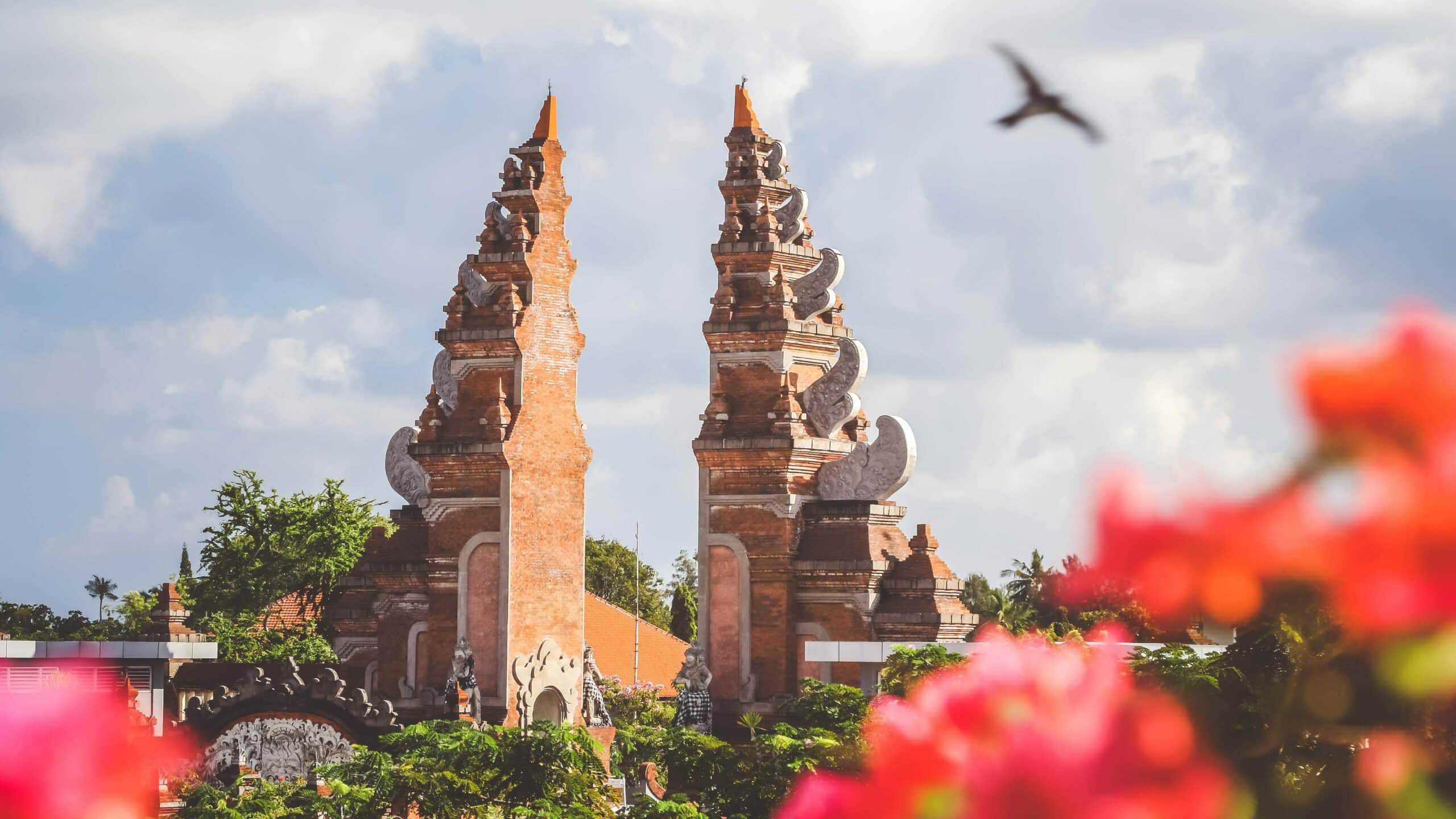
Firstly, Indonesia is the largest nation in Southeast Asia (by size) and the fourth most populous country on earth.
Secondly, it’s a geological wonderland on the Equator, boasting hundreds of volcanoes that meet at the Indian and Pacific Oceans, a culturally diverse Landmark. Additionally, more than 20 million people visit Indonesia annually because they want to see its famous beaches, (active) volcanoe, and fantastic landscapes.
Long associated with Bali, Indonesia is comprised of much more to experience. From the friendly locals to cuisines and opportunities to encounter orangutans and other unique wildlife in the wild, it offers visitors a once-in-a-life experience!
Furthermore, it comprises five main islands: Sumatra, Java, Borneo (known as Kalimantan in Indonesia), Sulawesi, and New Guinea; two major island groups (Nusa Tenggara and the Maluku Islands) and sixty smaller island groups.
Culture & History
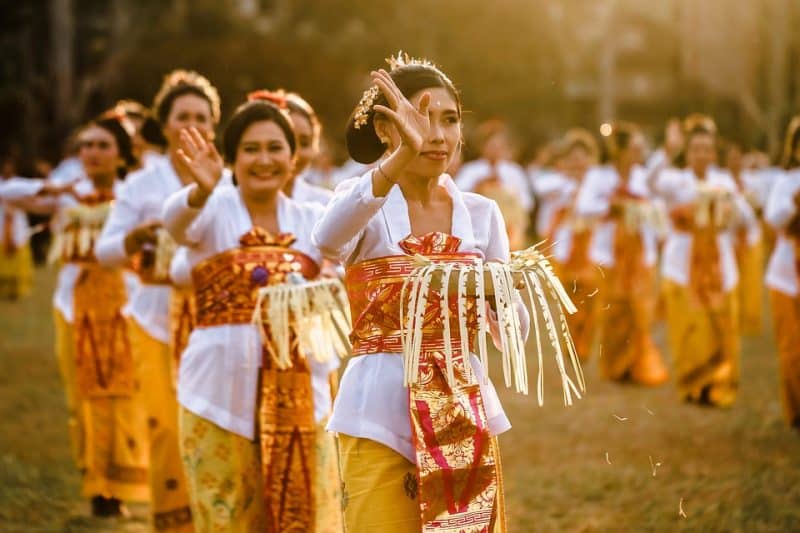
Indonesia is centrally located along ancient trading routes between the Far East, South Asia, and the Middle East. This resulted in many cultural practices being strongly influenced by many religions, including Buddhism, Christianity, Hinduism, and Islam, vital in the major trading cities.
Climate
Indonesia has a tropical climate and is hot and humid throughout the year. The primary rainy season runs from October to April, with the dry season lasting from May to September.
Generally speaking, the weather gets drier the further east you travel. July and August are the busiest months in Indonesia when hotel prices are the highest. Rainy season months tend to be of better value, but December, January, and February are best avoided due to heavy rain and floods.
Natural Attractions
Some of the many natural attractions and the wildlife they home…
Mount Bromo, Java

Mount Bromo is an active somma volcano and part of the Tengger mountains in East Java, Indonesia. About 137 species of birds, 22 species of mammals, and four species of reptiles are protected in the national park surrounding the volcano. Examples include besra, green peafowl, Javan rusa, Sumatran dhole, crab-eating macaque, marbled cat, and Javan leopard.
Lake Toba, Sumatra

Lake Toba was once the site of the largest volcanic eruption on Earth in the last two million years, about 74,000 years ago. It is the world’s largest crater lake and the largest lake in Southeast Asia and one of the deepest in the world. Home to many species of fish and birds.
Mount batur and Mount Agung, Bali

Mount Batur is an active volcano located at the center of two concentric calderas northwest of Mount Agung on the island of Bali. A location of esteemed beauty and wildlife. One of two volcanoes. Mount Agung is an active volcano in Bali, Indonesia, southeast of Mount Batur volcano, also in Bali. It is the highest point on Bali, and dominates the surrounding area, influencing the climate, especially rainfall patterns.
Nusa Penida

Nusa Penida is an island southeast of Indonesia’s island of Bali. It includes the neighboring small island of Nusa Lembongan and twelve even smaller islands. Nusa Penida is rich in corals and home to protected Manta rays and Sunfish colonies. Famous for bird-watching enthusiasts.
Wildlife
Indonesia’s lush forests, comprising just 1.3% of the world’s landmass, hold a staggering 10% of the planet’s remaining tropical rainforests, providing a sanctuary for thousands of unique wildlife species. In this extraordinary biodiversity hotspot, it’s estimated that over 300,000 wildlife species thrive.
This astonishing ecological diversity means that a remarkable 17% of the world’s wildlife finds a home in Indonesia. To put it into perspective, the country boasts the highest number of mammal species globally, a whopping 515, and is graced by the presence of 1,539 bird species. It’s an awe-inspiring testament to the natural wonders of this remarkable nation.
Here, we’ve chosen five remarkable animals that call Indonesia home. Prepare to be amazed!
#1 Borneo Elephants

The Borneo elephant, also referred to as the Borneo pygmy elephant, stands out as a unique subspecies of the Asian elephant, primarily found in the northeastern region of Borneo, spanning Indonesia and Malaysia. Within Indonesia, they are notably present in the state of East Kalimantan, favoring lowland forests that undergo seasonal flooding, particularly in places like the Kinabatangan region.
Unraveling the origins of these elephants has been a topic of ongoing debate. Recent research, utilizing genetic data analysis and computational modeling, points to the possibility that these fascinating creatures might have undertaken migrations between the Sunda Islands in Southeast Asia during periods of reduced sea levels.
Sadly, the Borneo elephant population is on a downward trajectory, with an estimated 1,500 individuals remaining in the wild. This troubling decline is primarily attributed to extensive deforestation, driven by logging and plantation activities, emerging as the most formidable threat to the continued existence of these magnificent creatures.
#2 Sumatran oragutans
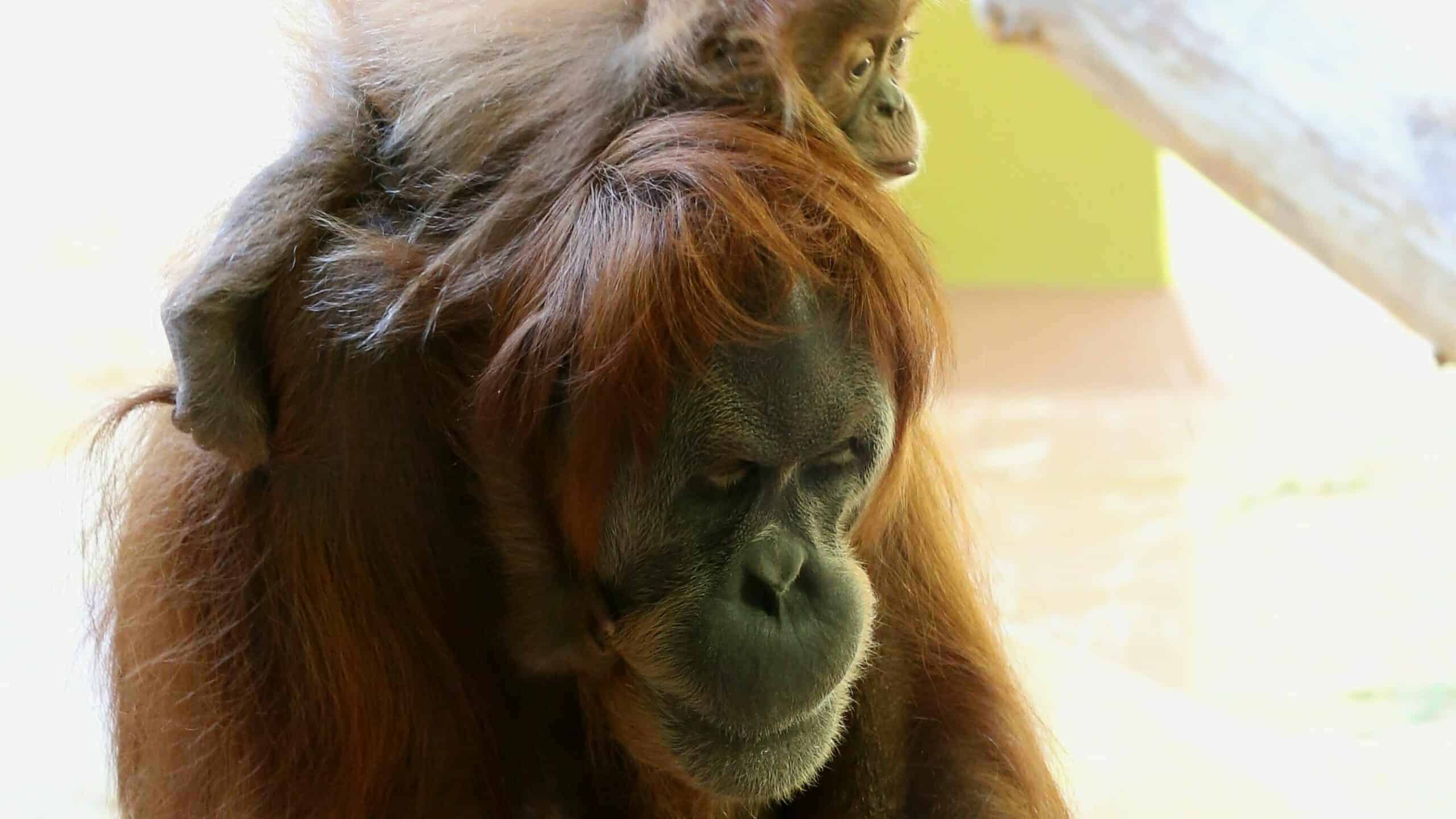
The Sumatran orangutan is almost exclusively arboreal, meaning they live primarily in the trees of tropical rainforests.
Sumatran orangutans are found only on the Indonesian island of Sumatra. Sadly just over 13,000 Sumatran orangutans are left in the wild, putting the species in critical danger of extinction.
A Sumatran Orangutan’s influence on its environment is very prevalent. Furthermore, if orangutans were to disappear, consequently, so would several tree species, especially those with larger seeds. The tropical rainforests where Sumatran orangutans live are also home to other spectacular species. In addition, rare Sumatran tigers, Sumatran elephants, and Sumatran rhinoceroses, all of which are already functionally extinct in the wild, inhabit these same ecosystems.
#3 Komodo Dragons

The Komodo dragon, the world’s largest lizard species, proudly carries the title of Indonesia’s official national animal. While the exact population count remains uncertain, recent studies suggest there may be around 3,000 of these magnificent creatures in the wild. However, other estimates soar as high as 6,000. These formidable dragons inhabit not only Komodo Island but also other islands such as Rinca, Gili Motang, and Nusa Kode.
#4 Javan Rhinoceros

The Javan rhinoceros, also known as the Sunda rhinoceros or lesser one-horned rhinoceros, is a very rare member of the family Rhinocerotidae. They may also be compared by size; they are the smaller and lighter relative of the greater one-horned rhino.
Unfortunately, the Javan Rhino is the rarest rhino species, with 74 animals surviving only in Indonesia. Therefore, it is essential to only seek out these animals ethically, through sanctuaries or NGOs. In the wild, they can only be found in one place globally; all Javan Rhinos live in a single site on the island of Java.
#5 Pygmy Tarsier

The pygmy tarsier, also known as the mountain tarsier, is a remarkable nocturnal primate native to central Sulawesi, Indonesia. These tiny creatures inhabit an area characterized by lowland forests and make their homes in the montane cloud forests of the central Sulawesi Mountains, specifically at altitudes ranging from 1800 to 2200 meters. You’ll often find them residing in the lower canopy amidst sapling trunks and on the forest floor. As Indonesia’s smallest primate species, they hold a special place in the country’s rich biodiversity.
However, these endearing creatures face severe threats, primarily from habitat loss and degradation. Human-induced factors such as hunting and fires, often set intentionally, compound the challenges they confront. Additionally, logging continues to pose a significant threat, with the possibility of ongoing transmigration and local clearance further exacerbating their vulnerability. Pygmy tarsiers are afforded protection, as they play a crucial role in their natural environment, regulating insect communities and exerting influence on local food webs.
National Parks
Comprising thousands of islands, the Southeast Asian nation of Indonesia is home to vast swathes of untamed natural beauty and more than 50 diverse national parks teeming with rare and incredible wildlife. We have selected the top four national parks rated for their beautiful flora and fauna.
Komodo National Park

They were founded as a national park in 1980. To protect the Komodo dragon. It is the world’s giant lizard. It was later dedicated to protecting other species. This included marine species. In 1991 the national park was declared a UNESCO World Heritage Site. Komodo National Park is selected as one of the New 7 wonders of the natural world.
Mount Leuser National Park

This biosphere reserve and the national park covers a vast tropical rainforest in northern Sumatra with various ecosystems.
Extending into Sumatra’s northern province of Aceh, Gunung Leuser National Park boasts a rich tapestry of wildlife. Here, you’ll find Sumatran orangutans swinging through the trees, Thomas-leaf monkeys exclusively native to the Leuser rainforests, lively troops of macaques, majestic hornbills soaring overhead, elusive sun bears, and an array of unique butterfly species. But that’s not all; the park also shelters the last remaining populations of Sumatran elephants, tigers, and rhinos, alongside a myriad of other remarkable creatures.
This rainforest jewel teems with biodiversity, its lush canopy a haven for countless species. However, lurking on the outskirts are ominous oil palm plantations, casting a shadow of threat over this precious ecosystem.
Baluran National Park

Baluran National Park is located in East Java, Indonesia. Mainly consisting of savanna, lowland forests, mangrove forests, and hills, the park offers beautiful landscapes, home to many species.
Ujung Kulon National Park

Ujung Kulon National Park is at the westernmost tip of Java, in the Banten province of Indonesia. It includes the volcanic island group of Krakatoa. The park is home to several rare animals, most notably the Javan rhinoceros and the Javan gibbon, which are endemic to the area. Other animals include langurs (leaf monkeys), muntjacs (barking deer), chevrotains (mouse deer), crocodiles, green turtles, green peafowl, and jungle fowl.
Tour Operators
- Authentic Indonesia: Eco tours
- Eco Lodges Indonesia
- Reef and Rainforest
- Rickshaw Travel: Eco Indonesia
Summary of Wildlife in Indonesia
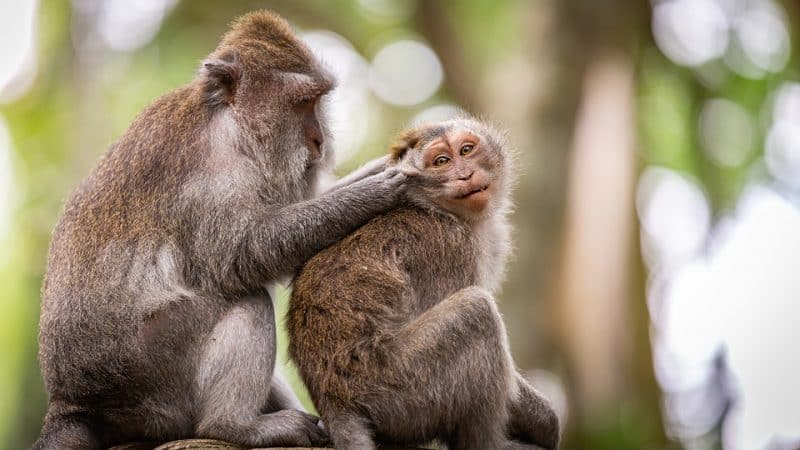
From the culture, food, and history to the diverse wildlife from beaches to jungles, Indonesia’s islands are a must-visit for any nature enthusiast.
Did you enjoy this blog about wildlife in Indonesia? Are you interested in encountering wildlife in Southeast Asia? If yes, refer to the wildlife of Vietnam, the Philippines, and Thailand to plan your next trip or learn more about these beauitful locations around the globe!
Thank you for reading Wildlife in Indonesia.
Frequently Asked Questions (FAQs)
Indonesia is famous for its iconic wildlife species, including the critically endangered Sumatran and Borneo orangutans, the Komodo dragon (the world’s largest lizard), Sumatran tigers, Javan rhinoceroses, and a wide array of unique bird species.
Yes, it is possible to see tigers in the wild in Indonesia. The country is home to the critically endangered Sumatran tiger. However, spotting these elusive big cats in the wild can be challenging due to their dwindling numbers and the dense rainforest habitats they inhabit.
One of the most rare and critically endangered animals to find in Indonesia is the Javan rhinoceros. It is one of the rarest rhino species globally, with only around 74 individuals remaining in a single location on the island of Java.
- Animals and Wildlife in Colorado - April 24, 2024
- Best Places to see Sloths - April 24, 2024
- Where to See Alligators in the Wild - April 24, 2024

